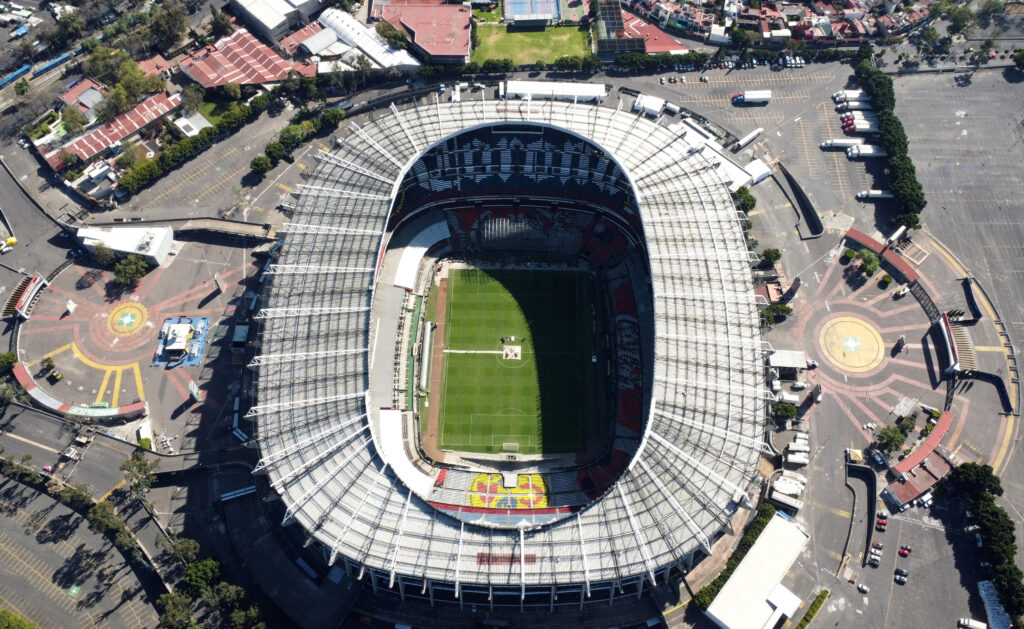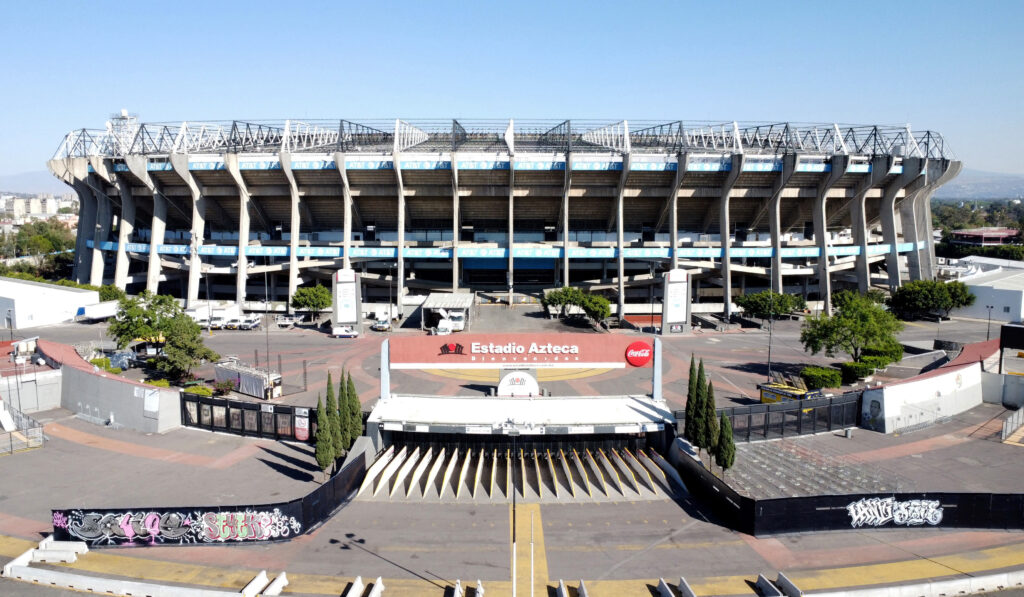

MEXICO CITY (Reuters)
With a year until Mexico makes history as the first three-time World Cup host, the dream of a spectacular showcase is colliding with the practical challenges of modernising the iconic Azteca Stadium for global soccer’s premier event.
Beneath the imposing silhouette of Mexico’s football cathedral – where Pele dazzled with Brazil in 1970 and Maradona’s ‘hand of God’ propelled Argentina to glory in 1986 – construction crews tackle the formidable task of bringing one of the sport’s most storied venues into the 21st century.
The stakes are magnified as the ‘Santa Ursula colossus’ will host the tournament’s opening match, a global spectacle that will focus the world’s attention on Mexico from day one.

Renovations will expand the stadium’s capacity from 87,000 to 90,000, with upgrades centred on meeting FIFA standards through new changing rooms, enhanced hospitality zones, revamped VIP areas and additional seating in spaces previously occupied by boxes and lounges.
While government officials and football administrators envisioned the project as a symbol of national pride, the renovation process has eroded trust between developers, local residents and other stakeholders.
Stadium administrators announced in February that they had secured a 2.1 billion peso ($110.19 million) credit line from local financial group Banorte – along with a controversial new name: Estadio Banorte.
FIFA regulations mean the stadium will be referred to as “Estadio Ciudad de Mexico” during the World Cup, yet the rebranding has sparked a fierce backlash from some fans, who view it as sacrificing football heritage for commercial interests.
Harsh reality

The backlash over the stadium’s new name represents only one facet of the mounting tensions. Box and suite holders – some with relationships spanning decades – have threatened legal action after FIFA announced it would commandeer their seats during the tournament, overriding established contracts.
One member of the Mexican Association of Box Holders has already filed a legal challenge to defend access rights.
Beyond the stadium walls, frustration runs equally deep. Residents of Santa Ursula and surrounding neighbourhoods fear that promised infrastructure improvements like pedestrian bridges and transit lines will fail to address fundamental issues, including inadequate lighting, water shortages and persistent traffic congestion.
“We’re not the stadium’s backyard,” one local resident told Expansion Politica. “But we’re always treated that way.”
By contrast, Guadalajara and Monterrey, Mexico’s other two host cities, face fewer obstacles.
Guadalajara’s 48,000-seat stadium, opened in 2010, has already hosted major events including the 2011 Pan American Games, while Monterrey’s 53,500-capacity venue, inaugurated in 2015, needs only minor upgrades – primarily new turf and a pitch ventilation system.
“We’ll install a system to ventilate and oxygenate the pitch before replacing the grass,” said Alejandro Hutt, Monterrey’s Host City Manager. “That will be an important legacy from the World Cup and beyond.”
As construction continues, Javier Aguirre’s Mexico squad are building towards a crucial summer, with a Gold Cup title defence ahead and friendly matches against Turkey this week, followed by Japan and South Korea in September.
After failing to advance beyond the group stage at Qatar 2022 – their worst World Cup performance since 1978 – Mexican fans crave more than just a well-organised tournament. They want to see Mexico break the ‘fifth-game’ curse and reach the quarter-finals for the first time since 1986, the last time they were World Cup hosts.
For a football-mad nation, pride will come not merely from hosting but from delivering on all fronts.
(US$1 = 19.0578 Mexican pesos)







Comments